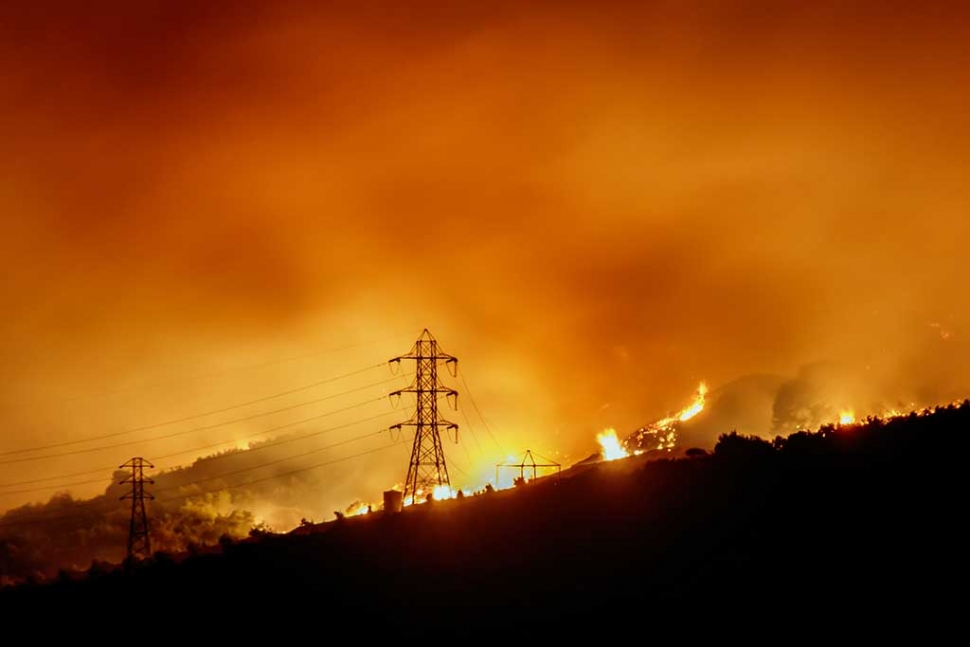|
Photography Know-How
 Photo of the week "Firestorm on hillside west of Fillmore 10:30 pm. 12/l1/17" by Bob Crum. Photo data: Bulb mode, Tamron 16-300mm @300mm, f/18 @3.7 seconds. By Bob Crum — Wednesday, December 13th, 2017
The Coveted List!
 Bob Crum I spent a whole year helping y'all wean from silly phonetography to real photography. Resistance is futile you know. It's true, with each new generation of cell phones there is a semi-legitimate argument for not needing a “real camera”. Cell phones are lightweight and fit in your pockets, uncomplicated and easy to use and share images immediately online. But so many limitations! Advantages of a “real camera” are: Interchangeable lenses from macro to zoom for greater options, superior image quality overall, the ability to take artistic control over the exposure, larger image file-size capacity, higher resolution images and more detailed photos, better dynamic range & color accuracy, the ability to create high depth-of-field, adjustable shutter speeds for shooting action or sports to name a few. Of course you've heard me extol those attributes all year. Just imagine becoming a “real” photographer! 'Tis the season you know so I expect that many of you have your photography list done for Santa. If not, the following are some ideas starting with point-and-shoot (P&S) cameras. Buying an easy-to-use P&S digital camera but have a limited budget? here are a few great cameras for starters. First, a Canon Powershot SX610 HS. The SX610 HS features an 18x optical zoom lens, a 20-megapixel sensor and an improved grip plus built in Wi-Fi and NFC. Another worthy P&S is the Sony Cyber-Shot DSC-WX220, a 10x optical zoom, 18.2MP Exmor R CMOS sensor, NFC, and Wi-Fi built-in. For the Nikon enthusiasts, the Nikon COOLPIX S5300 features a 16Mp CMOS sensor, 8x optical zoom and up to 16x Dynamic Fine Zoom & built in Wi-Fi. The Panasonic Lumix SZ10 has a tilting selfie screen, 12x optical zoom lens and built-in image stabilisation & built-in Wi-Fi. Another cool compact camera is the Sony Cyber-shot DSC-WX500 which has a wide focal range, flip-up LCD, Wi-Fi and image stabilization. For a rugged-and-waterproof camera, consider the Olympus Tough TG-5 which has lots of options for above and underwater photography. If you think you need more than a P&S, dSLRs deliver a big step up in image quality from a compact camera or smartphone, offering far more manual control and the ability to change lenses to tackle a huge variety of projects. The following are a few entry-level dSLRs to consider: Nikon D3400 or D3300 or Canon EOS Rebel T7i or T6i. The Sony Alpha 6800 is another fine dSLR entry-level camera. The Rebel is awesome! You may also want to consider a mirrorless camera as an alternative. Panasonic, Sony, and Olympus have excellent mirrorless cameras. For any camera considered, check the manufacturer's website for full specifications. A few caveats…Excepting P&S cameras, consider a dSLR camera a “system”. When you buy a dSLR camera: Canon, Nikon, Sony, Panasonic or Pentax, think “system”. A vital component of a dDLR system is the “lens”. Look at the lens selection for a given camera brand. Also, 3rd party lens manufacturers like Sigma and Tamron, build lenses with Canon, Nikon and in some cases Sony mounts. Thus, I use a Canon 7D MKII. The lens selection by Canon, Tamron and Sigma is huge. Also consider the kit lens with the purchase of your first dSLR which are a great value! Lastly, to insure warranty service, buy from an authorized dealer. A gray market item may be cheaper but manufacturers don't have to honor products bought from unauthorized dealers. Photo of the week is the wildfire on the hillside west of Fillmore Monday evening about 10:30 pm. Happy photoing. As always, send your comments, suggestions and questions to bob@fillmoregazette.com |
